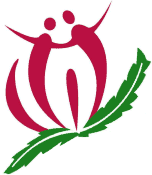Muscle in on exercises for Lymphoedema
A specific exercise program, designed to assist the lymph drainage from your swollen limb is an important part of your overall management for lymphoedema and something that you can do to help yourself.

During exercise, the muscle contraction that occurs when the muscles are tensed puts increased pressure on the lymph vessels. This "muscle pump" squeezes the vessels to enhance the lymphatic pumping mechanism (see diagram), which in turn helps to move lymph fluid into and along the lymph vessels, back towards the chest and away from the affected area. There are one-way valves in the deeper lymphatic vessels which help stop backflow and help to direct the lymph fluid centrally away from the limbs towards the trunk. Specific exercises thus help to drain fluid out of a swollen limb. Exercises are also important to maintain mobility of the joints and to stretch and strengthen muscles.
When Exercising, Remember the Following:
- Perform exercises slowly and smoothly, in a gentle manner, they should not be painful
- Wear bandages/compression sleeve whilst exercising if available - this will further enhance the pumping action of the lymphatic vessels.
- Exercises start with the trunk to help with lymph drainage centrally, followed by exercises of the affected limb: firstly using the proximal muscles (i.e. the muscles closest to the centre of the body e.g. shoulder/upper arm; hip/thigh) then the distal muscles of the limb last (i.e. muscles furthest from the centre of the body e.g. forearm and fingers; calf, ankle and toes). Do exercises in the order provided, as by draining the trunk and central areas back to the general circulation first, this gives the fluid from the limbs somewhere to drain. It is like emptying a bucket so more fluid can be put into it.
- Include deep breathing - this causes a pressure change which acts like a vacuum inside the ribcage, helping to drain lymphatic vessels towards the trunk
- Get into a routine, a time of day that fits in with your lifestyle.
- A person's exercise program should be tailored to the individual and will depend on their age, occupation, lifestyle, level of fitness and current health.
- Always get your doctor or lymphoedema therapist's approval and guidance for any exercise program. If any exercise seems to cause you any problems or seems to result in further swelling, STOP, seek professional advice.
SIMPLE EXERCISE PROGRAM:
(examples only)
a) Start with PROXIMAL muscles
- Gently bounce knee towards chest, holding leg with both hands, (in sitting or lying) x5 each leg (do not do if you have had a hip replacement). This clears the groin lymph nodes.
These next exercises assist drainage from the neck and shoulder girdle:
- Head turns: Keep shoulders level, turn head to the right, back to the middle, then to the left. x5
- Look slowly up, then down, then rest in centre x3
- Shrug shoulders up, then down x5
- Roll shoulders forwards in large circles x5, then roll backwards x5
- Lift both arms slowly out sideways whilst taking in a deep breath, lower your arms slowly as you breathe out x3
- Slow and gentle circular massage in the armpits for 30 seconds to empty nodes
- Slow and gentle circular massage in groin to empty nodes x 30 seconds.
- Place hands on abdomen above belly button. Take a slow deep breath in, relax and breathe out as you gently press on abdomen with hands x3
b) Follow with exercise of Distal Muscles:
For arm lymphoedema: sit or lie with arm elevated
- Bend elbow and touch hand to shoulder, then straighten elbow x5
- Circle wrist x5
- Make a fist, then straighten fingers x5
- Go back and massage armpits, relax with arm elevated
For leg lymphoedema: lie with leg elevated
- Tighten thigh muscle, press back of knee down x5
- Bend and straighten leg at knee x5
- Move feet up and down at ankles (keeping knee straight) x5. Bend toes down, stretch toes up x5
- Go back and massage groin nodes, relax with leg elevated.
© Lymphomation, Autumn 2003
|


